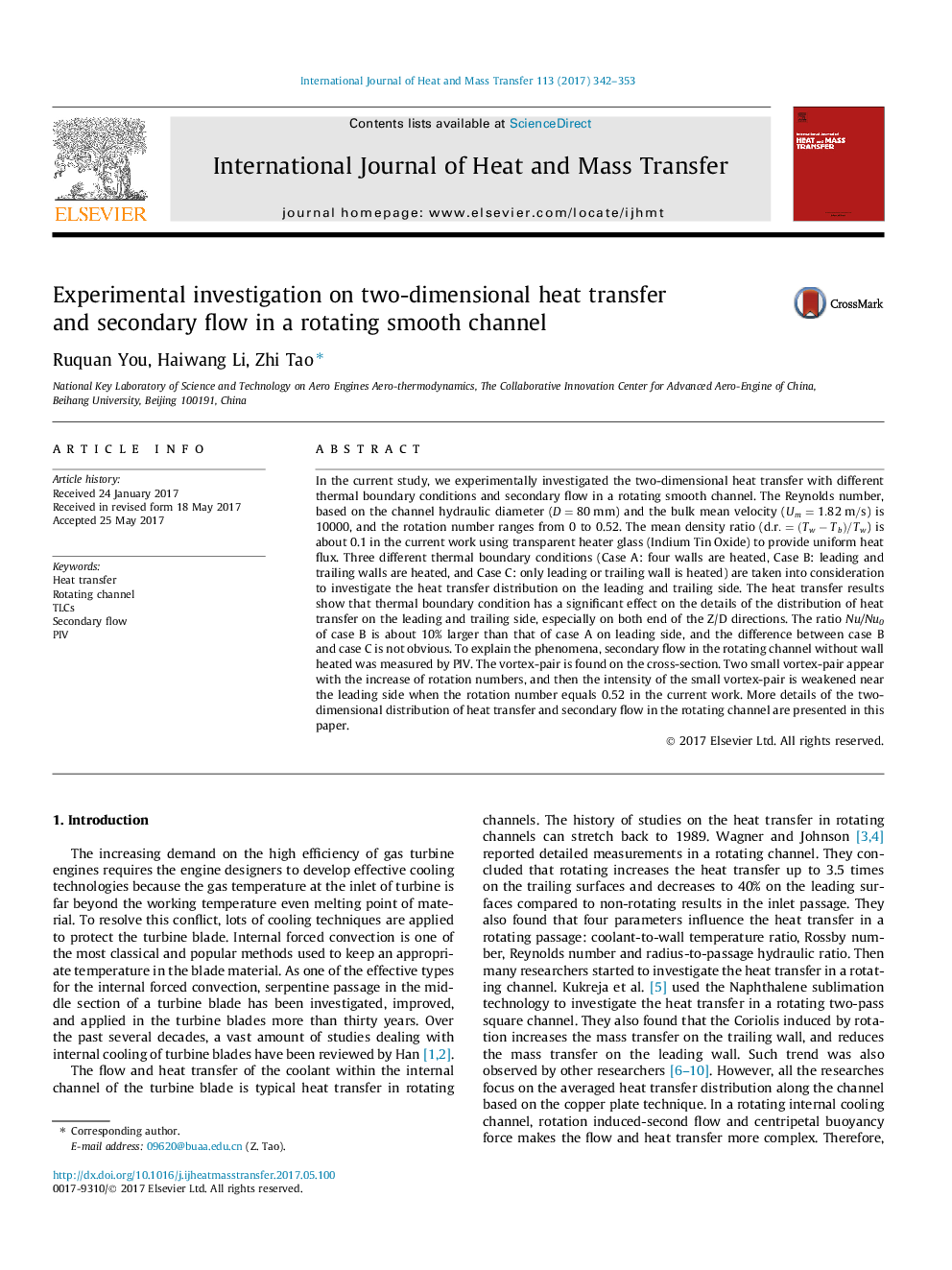| Article ID | Journal | Published Year | Pages | File Type |
|---|---|---|---|---|
| 4994181 | International Journal of Heat and Mass Transfer | 2017 | 12 Pages |
Abstract
In the current study, we experimentally investigated the two-dimensional heat transfer with different thermal boundary conditions and secondary flow in a rotating smooth channel. The Reynolds number, based on the channel hydraulic diameter (D=80mm) and the bulk mean velocity (Um=1.82m/s) is 10000, and the rotation number ranges from 0 to 0.52. The mean density ratio (d.r.=(Tw-Tb)/Tw) is about 0.1 in the current work using transparent heater glass (Indium Tin Oxide) to provide uniform heat flux. Three different thermal boundary conditions (Case A: four walls are heated, Case B: leading and trailing walls are heated, and Case C: only leading or trailing wall is heated) are taken into consideration to investigate the heat transfer distribution on the leading and trailing side. The heat transfer results show that thermal boundary condition has a significant effect on the details of the distribution of heat transfer on the leading and trailing side, especially on both end of the Z/D directions. The ratio Nu/Nu0 of case B is about 10% larger than that of case A on leading side, and the difference between case B and case C is not obvious. To explain the phenomena, secondary flow in the rotating channel without wall heated was measured by PIV. The vortex-pair is found on the cross-section. Two small vortex-pair appear with the increase of rotation numbers, and then the intensity of the small vortex-pair is weakened near the leading side when the rotation number equals 0.52 in the current work. More details of the two-dimensional distribution of heat transfer and secondary flow in the rotating channel are presented in this paper.
Related Topics
Physical Sciences and Engineering
Chemical Engineering
Fluid Flow and Transfer Processes
Authors
Ruquan You, Haiwang Li, Zhi Tao,
